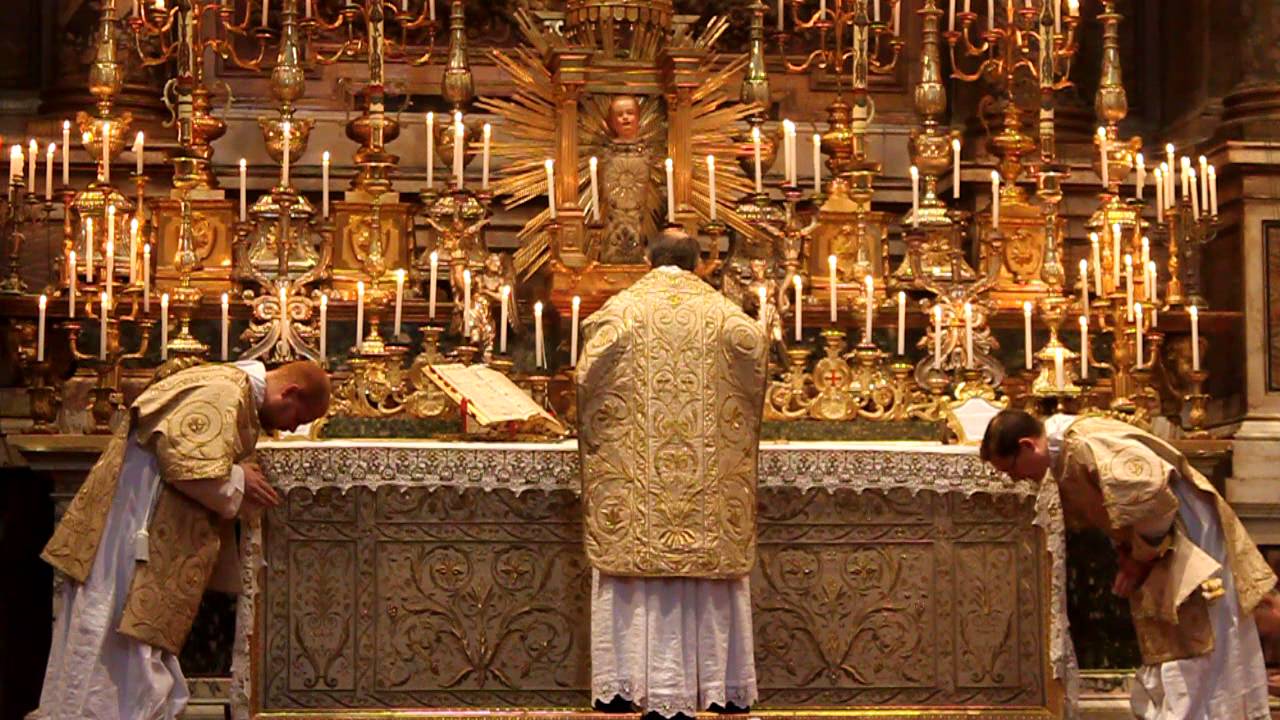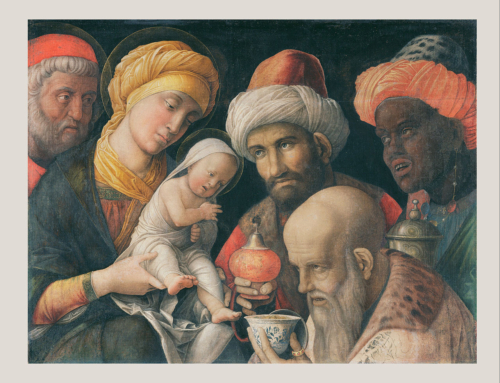A week ago I wrote a blog post about twelve things I like about the Novus Ordo. I thought it was a pretty harmless reflection on my life as a parish priest and my observation of what works and doesn’t work in the liturgy.
Hooboy! I didn’t realize that it would produce quite such a tempest in a teapot, inspiring learned articles from an eminent liturgiologist and threads of social media comments on the pros and cons.
It was only a blog post, and it was only a comment on what I liked. It wasn’t a definitive treatise on the liturgy and it wasn’t a criticism of the Latin Mass and it certainly wasn’t a prescription of what I think everyone should do. The fact of the matter is, I’m not an expert in liturgy. Not at all. Am not nor ever hope to be.
As in most everything in my life, I’m a dilettante, a poetaster, a Sunday afternoon painter, an amateur. However, I do respect those who are more disciplined than I am. I like the fact that they do the research and beaver away at it all with a passion. I respect their attention to detail, their ability to hone an argument and pay attention to rubrics with all the concentration of a heart surgeon or a chimpanzee trapping an ant with a stick.
Me? I’m afraid I do not have much interest in whether or not the anaclesis from the Syro Malabar Rite of the fifth declension features a Greek preface or not. I am glad some people dig deeply into the mysteries of whether the bishops of the Petrine revision of the Mozaribian liturgy in sixth century Anatolia wore the camelaucum or whether it was leather or embroidered felt. Such things are clearly very important and those who write books on them are to be congratulated because it means when busy priests need the answers they will know where to turn.
My approach is simpler, and I admit, more practical. I am interested in what works best and my musings on the matter really are “what I like”. I don’t suggest that what I like everyone should like, nor do I suggest that the liturgy is simply a matter of “You say pot-AH-to and I say pot-AY-to”. I think there is an objective standard, one that is given by the church. In fact it is all written down in documents like the General Instruction of the Roman Missal. There are enough rules there to be doing with and after that it seems plain to me that whether you like it or not, the different options are really no more than a preference or a choice. Of course one can argue until the candles go out that this liturgy or that practice is better or older or more reverent or more accessible or better for children or better for whoever. That’s why there are liturgy wars and it is these arguments that make the whole thing so much fun for the liturgical cognoscenti and the avid audience who like watching this ecclesiastical mud wrestling match.
One of the reasons I wrote a blog post about what I like is because my life was changed by a little aphorism by a now forgotten English writer called F.D.Maurice. He said, “A man is most often right in what he affirms and wrong in what he denies.” I came across this gem when I was studying at Oxford. I was, at the time, moving from Evangelicalism to high church Anglicanism and as I found myself sniffing around the borders of Catholicism, I would come across various bits of Catholic custom, theology or practice and (being a Bob Jones boy) reacted instinctively against it. “A Rosary!! Aarrgh !! That’s worshipping Mary!!”
Then I came across Maurice’s nugget of wisdom and thought I should try to affirm not deny. I should try to give everything and everyone the benefit of the doubt. I should try to be positive about everything–even the things I found not to my liking.
I cultivated this attitude and have found it has enriched my life endlessly. Because of it I came to enjoy Italian opera, Indian food, monasticism, the charismatic movement, Central America, Africans, South Carolina, gospel quartets, Grits, the French, the Catholic Faith and much more.
I am a sinner and so I do not always keep to this high ideal. Alas, I do sometimes criticize people. I have pet peeves. I poke fun and sometimes even mock. I’m an arrogant son of a gun and on my bad days I find it all too easy to put down people I deem stupider than myself. But on the whole I try to see what’s good and excuse the bad. I try to see how we can bring good out of a bad situation and I think it is a waste of time to grumble, complain and blame other people for stuff I don’t like if there is really nothing I can do about it.
So with all that in mind, here are twelve things I like about the Latin Mass. I’m not making this up. I really do like these twelve things in the same way I really do like the twelve things I like about the Novus Ordo. In fact, I have half a mind to write a “Twelve Things I Like” column about a whole slew of churchy things: “Twelve Things I Like About the Charismatic Movement” or “Twelve Things I Like About Evangelicals” or “Twelve Things I Like About Life Teen” or “Twelve Things I Like About the New Ecclesial Movements.” or “Twelve Things I Like About Baroque Churches”…although I admit some of these lists would be more difficult to compile than others.
- Latin – I don’t know Latin, but I think it is a fine language. It sounds noble, clean, crisp and dignified. The fact that I don’t speak the language doesn’t matter to me. At that point in the liturgy the Latin helps me to transcend the ordinary, everyday speech I usually use. I hope no one will be offended, but I experience the same thing as when I speak in tongues. I use a language that transcends language.
- Reverence – People really are reverent at a Latin Mass. They are attentive and pious and even their kids have a prayerful and attentive attitude for the most part. They show great reverence when they kneel to receive communion on the tongue and that reverence produces a wonderful atmosphere of worship.
- Altar Boys – The Latin Masses I have attended have altar boys who really know what they’re doing. They’re not slouching and picking their nose or chewing gum. They’re not wearing da-glo sneakers and they show true reverence. Nice.
- Ad Orientem – I could write a whole book on why this is best, but Fr Lang has saved me the trouble. Ad orientem turns us toward the Lord rather than towards ourselves. There’s more to it than that, but that’s the bottom line.
- Music – I have to admit, sometimes the Gregorian chant has been pretty dreary, and I’ve sometimes got the impression that the music director would prefer to do the right piece badly than the “wrong” piece well, but on the whole the sacred music is beautiful, good and true.
- Tradition – The Latin Mass connects us with the worship of our church from the last 500 years and beyond. The roots are alive and help to ground our modern lives in the riches of the past.
- Vestments – I like nice vestments. They dignify the Mass and lend glory and beauty to the celebration. They also help to blot out the priest’s individual personality. I see the vestments and I see the office of the priest…not Father so and so.
- Incense – What’s not to like about incense? The ceremony of censing the altar takes you beyond words like all good ceremony and ritual does. It is also a connection between our faith and not only the faith of the Jews so long ago but many other religions. Incense is a universal and its Biblical too.
- Mother Mary – The Latin Mass often ends with a hymn to the Mother of God. That’s good.
- Beauty – Beauty, Truth and Goodness. It’s a little Holy Trinity.
- Altar Rails – Kneeling at the altar rail gives people a few moments to be there in the Lord’s presence rather than the move it along assembly line of standing to receive. There’s dignity and simplicity and humility in that.
- Example – The Latin Mass offers a kind of gold standard for the celebration of the Mass. Those of us who celebrate the Novus Ordo are informed and enlightened by those brothers and sisters of ours who celebrate the Extraordinary Form. and do it so well. Good for them!
Now here’s a curious thing: I doubt very much that this article will elicit a long and detailed response from some prickly professor somewhere who is a devotee of the Novus Ordo. It is unlikely that a cadre of Novus Ordo aficionados will put together a Twitter campaign saying that I have attacked their beloved liturgy. There are all sorts of reasons for this of course. It is very possible that there aren’t any prickly professors who would spring to the defense of the Novus Ordo, or if there are, they are busy reading the National Catholic Reporter over their granola and don’t even know my blog exists. It could be that no one springs to the defense of their beloved Novus Ordo because, quite frankly, nobody does love the Novus Orod or it may just be the case that those who attend the Novus Ordo are rather indifferent to the whole debate thinking they’ve got better things to do, and that the “liturgy wars” are therefore only a kind of ecclesiastical shadow boxing.
I expect I will also have tweet or Facebook comments from good and pious ladies who love the Latin Mass saying, “If you really think the Latin Mass is so wonderful Father why don’t you celebrate it?”
First of all, I don’t know Latin and don’t have the time at my age to learn it. This is a regrettable gap in my rather spotty education I admit. Nevertheless, if there were a pastoral need I would do so, but in my particular situation there is no need. In my town we have the excellent Fr Chris Smith–no mean liturgist himself who is devoted to the Latin Mass, celebrates it every day, prime time on Sundays and even offers the other sacraments in the old form when requested. His parish is a perfect model of a diocesan parish that successfully and beautifully integrates the Latin Mass and solemnly celebrated Novus Ordo Masses. The third reason is that by celebrating the Novus Ordo solemnly in a way that is increasingly informed by the Latin Mass I can include the twelve things I think are positive from the Novus Ordo and the twelve things I think are positive from the Latin Mass. I realize some purists on both sides look askance at this as a sad compromise–it being neither fish nor fowl, but one could see it more like a proper fusion. Furthermore, it is the way we have in an ordinary American parish of introducing our people (who have had nothing but Novus Ordo Vanilla Flavored Mass for fifty years) to the sumptuous riches of our Catholic tradition.







As always, balanced and fair, Father. My husband came into the Church under JP2., who inspired him. He and other converts that we know have said that it’s unlikely they would have converted had the mass still been only in Latin. I have noticed few traditionalist Latin mass devotees who show an interest in evangelizing, if it means bending their principles one inch. They’re often so busy criticizing the abuses of Vatican 2 that they don’t seem to notice or care about the souls who have been drawn in because of it!. The work of Marcus Grodi, you and so many others, has brought hundreds of zealous, educated converts into the Church. Well educated laity, as Bl. John Henry Newman sought, are part of what it will take to lead us and turn this crisis around. And by virtue of studying the history of the Church, these people often seem less daunted by the current crisis and are leading the charge in bolstering the faith of discouraged laity and priests these days. Saving souls is what it’s all about. How soon we forget! – Julie Linn
Thanks for your encouraging words! Viva Christo Rey!
Orestes Brownson got past the Latin somehow,or on a different note Vincent Price the Actor. I hope Ms. Linn is not one of the English only demanders and this isn’t a language matter, doubtful our Spanish masses would have nudged her husband through the vestibule. There was a point in my life when I was living in Florida and because of my work schedule the only Sunday Mass I could attend was French. When the ushers stopped me and informed me it was a French Mass I informed them it was also the only Mass I could attend so on Sundays I’ll be French and we laughed. If it’s doctrine that changed after Vatican 2 and made all the difference, what doctrines are they? I do wholeheartedly agree that there are far too many in our Church who see themselves as more Catholic than most, and that through some birthright.
Good balance of viewpoints, Father. Thanks.
I really like the Novus Ordo Mass. I grew up with the Latin Mass, but when the change to the vernacular came, I leaped at it, and never looked back. The Novus Ordo is like any other ritual in that it can be celebrated reverently or irreverently, and that makes a huge difference in how someone may think about it.
I also like your approach, Father, of including elements of the Extraordinary Form in the Novus Ordo. My former parish in Michigan does that, and it works very well.
It’s very good that the Extraordinary Form is still available for Catholics–I hope that doesn’t change. But I also hope that the Church continues to give us all a choice.
Excellent analysis. Where is the original blog?
Probably didn’t see it because of my radiation treatments. I love your description, especially of vestments.
A reverently celebrated mass is always wonderful. Years ago I heard Fr Benedict Groschel describe his first mass, with another priest complaining that he took too long. Language and liturgy is no solution to our state. Only Love for God is.
Anne, here is the link to the Novus Ordo Mass post, if that’s what you were referring to:
https://dwightlongenecker.com/twelve-things-i-like-about-the-novus-ordo-mass/#comments
Blessings.
Father, I appreciate how you offer part of the Novus Ordo Mass ad orientem. It helps the laity to internalize the fact that the Mass is being offered to God. To illustrate, a friend of ours from our previous parish in Illinois took her son to the restroom before Mass started. The church is very old — built back in the day when the churches didn’t have toilets in them (and it never seemed to be an issue, even for the children. Mom always made sure we peed before we left the house). Anyway, our friend offered her young son the option of going by himself to the men’s or going with her into the women’s. He opted for the men’s, walked through the door and shortly came right back out. He told his mom he’d rather use the women’s. She asked why and, pointing the door he had just come through, he said, “God’s in there.” She was quite confused until the priest came out the door.